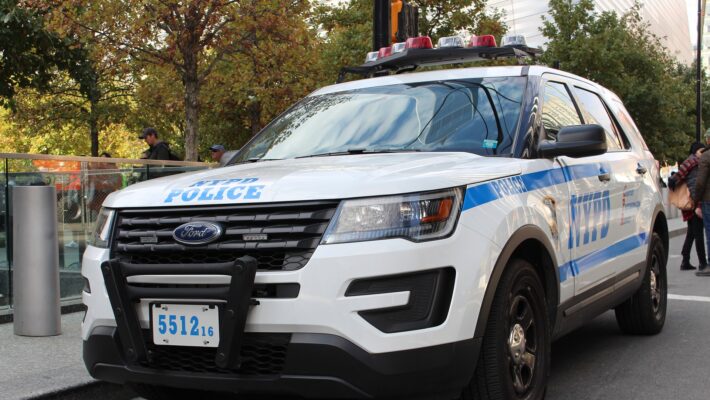You don’t see color. You don’t have a racist bone in your body. How could anyone accuse you of racism? Being a racist would be the most odious stain on your character, an incorrigible shame. Being accused of racism would be libelous. You would’ve voted for Obama a third time if you could have!
Sound familiar? These are the tapes played by the mind of white fragility. Unfortunately, they do nothing to solve racism. In fact, they enable it. But they have strong roots, and can be hard to dig out. So how do you replace those tapes with truly antiracist ones? How do you make the leap from being passively ‘not racist’ to becoming an empowered antiracist? Let’s ask some Black people!
There’s No Such Thing As ‘Not Racist’
First of all, as Ibram X. Kendi points out in How to Be Antiracist, there’s no such thing as ‘not racist’ or ‘nonracist.’ There’s only racism and anti-racism. Most of what we call ‘not racist’ is actually passively supporting racism. Any action not directly opposing racist policy or working to dismantle racist systems is giving them a pass. But don’t get overwhelmed just yet. Let’s look at Kendi’s helpful definitions of some basic terms:
- Racism: racist policies and ideas that normalize racial inequities.
- Racial inequity: when racial groups do not have equal footing.
- Racist policy: measures that sustain racial inequality; also known as ‘structural racism,’ ‘institutional racism,’ or ‘systemic racism.’
Notice that by Kendi’s definitions, a person cannot fundamentally be racist. People support racism, or do racist things, or express racist ideas. But the terms ‘racist’ and ‘antiracist’ do not describe a human being at their core. These terms describe actions, ideas, and most of all policies. None of us are racist, so saying ‘I’m not racist’ doesn’t mean anything. Almost every one of us at some point does and says racist things, regardless of our race.
This is important and empowering, because while we can’t change who we are, we can correct what we say and do. We can also correct policy. An antiracist is not an enemy of white people, but an enemy of white supremacist policies, actions and ideas.
Dr. Crystal Marie Fleming supports this position in her book How to Be Less Stupid About Race. While most of us were taught that racism was, alas, a dark part of America’s past, or something that still exists only in the overt hatred expressed by white nationalists, racism thrives today. It’s pervasive in America and globally, through existing structures and policies. “White supremacy is not just neo-Nazis and white nationalism,” Fleming writes. Rather, she says it’s “a system of power designed to channel material resources to people socially defined as white.”
A Fake Scientific Concept That Became a Real Social One
‘Socially defined’ is a critical element here, because the concept of race is a European idea based in pseudoscience. Race is simply a set of shared physical features. There is no clear boundary between races, and no biological basis for classifying human beings into different racial categories.
However, since Europeans and their descendents have built global systems to benefit people with certain shared physical features, and oppress others with apparent differences, race has become a social reality. It defines how we’re socialized and how we move through the world. It influences our access to information and resources, our safety when encountering law enforcement, and whether or not we get side-eyed suspiciously at Whole Foods every single time we have to buy groceries.
Even though the original concept of race is a pseudoscientific fallacy, its influence persists. “Mainstream scientists, geneticists and medical researchers still invoke race and use these categories in their work, even though we have been told for 70 years that they have no biological meaning, that they have only social meaning,” says Angela Saini, author of Superior: The Return of Race Science.
But the social meaning is important. Being colorblind, or ‘not racist,’ might have meant something in a distant epoch before racist ideas governed the world. But now, race has become a social and political reality that we must confront and deal with. We cannot ignore the fact that policy favors people who look a certain way, while punishing, disadvantaging, incarcerating, and killing people who look another way.
As Amandla Stenberg’s character Starr tells her supposedly ‘colorblind’ white boyfriend in The Hate U Give, “If you don’t see my Blackness, you don’t see me.” To ignore race is to ignore racism. That’s why the action (or usually inaction) of self-identified ‘nonracists’ is actually white supremacist behavior: ignoring race maintains a status quo that benifits white people—including white Latinxs, white Natives, and white-passing mixed-race Americans. Race shouldn’t exist. But socially, politically, it does. The burden is on its beneficiaries to confront and dismantle it, because we are the ones who can do so safely and efficiently. Because it suppresses those outside of it, racism has to be torn down from the inside.
Making the Leap From Passive Racism to Active Antiracism
Being ‘not racist’ is passive, while antiracism is active. A passive racist (that is, a ‘nonracist’) will listen to their uncle’s bigoted jokes or tirades. Perhaps they’ll frown uncomfortably or harrumph in disapproval. But they’ll still allow the uncle his ‘free speech’ and make space for him to share his toxic influence.
An antiracist will put a halt on it, and call the uncle out for his white supremacy. An antiracist will take the opportunity, and seize the moment. They won’t allow that toxicity to spread unchecked. An antiracist will use their platform to spread antiracist ideas and dismantle racist ones. They’ll challenge the assumption that Uncle Racist’s behavior is normal. They’ll use their access to white spaces to try to educate the uncle, who is more likely to listen to them than to Black people saying the same thing. If the uncle persists in spewing racism, the antiracist makes it clear that the uncle will become a social pariah, and follows through by making him unwelcome in the future so he doesn’t have a place to spread his ideas. In doing so they’ll set a different example, inspiring onlooking family members towards antiracist action and accountability. The uncle may be lost, but the niece isn’t. Black people can’t reach these family members. Only we can. And the same goes for predominantly white workplaces, campuses, and friend groups.
The goal of a passive racist is to ignore race, to distance themselves from whiteness, or to draw attention to how enlightened they are. The goal of an antiracist is to confront racism, to support and protect nonwhites, even at their own expense. A nonracist feels guilty about white privilege. An antiracist uses it.
In nonwhite spaces, antiracism requires selflessness. It requires us to listen to Black people and other POC, to validate their voices and suppress the white compulsion to debate. It demands that we let them have the mic and the spotlight, uninterrupted. That we validate their opinions, experiences, and ideas, even those that feel abrasive or scary to us. It delegates us to carry out the actions prescribed by Black people and POC to bring about their version of a more equitable world, regardless of our own opinions on the matter. We must become transparent vessels for the Black agendas of equity and justice. We must expect no thanks, applause, or material benefits for this.
Practicing Silence, the Ultimate Test of a White Man
As you become a practicing antiracist, you can expect those looping white fragility tapes to flare up and fight it. Silencing our opinions and biting our tongues is notoriously difficult for people socialized as white, especially white men. We believe our opinions matter in every instance, on every topic. We believe in a marketplace of ideas, that discourse is holy. We want to play devil’s advocate. But antiracism asks us to please shut up, and just listen to nonwhites.
Second to arguing, our strongest impulse is defensiveness. We must halt that, too, and open our hearts with vulnerability. Why are we defensive? What racist ideas are still hiding in there? How are we trying to protect our own white fragility? Once halted in its tracks, the defensiveness becomes a gift, because it draws our attention to the parts of our minds where white supremacy still lingers. In addition to doing the external work of antiracist praxis, we can do the inner work of asking these questions, and examining our discomfort. Sitting with discomfort reveals volumes, and gives us pause to reflect on how uncomfortable it must be for nonwhites to move through an invalidating world, without the privilege and safety we get to take for granted. So practice silence in nonwhite spaces, and when encountering nonwhite perspectives. See what it brings up.
To recap: make racist policies and ideas your nemeses. Don’t retreat into passive ‘nonracism,’ enjoying the benefits of white supremacy and hoping nobody rocks the boat. The boat is racist. Rock it. Be vocally antiracist in white spaces, and silently receptive in nonwhite ones. Become an agent of nonwhite agendas. Stay active, even as a listener. This is the beginning of antiracism in both its inner and outer forms. It’s the proving ground that will give us the antiracist skills we’ll use to change policy and dismantle the systems built by our colonizing, eugenics-obsessed ancestors, the systems we’re still unjustly benefiting from today.
Amandla StenbergAngela SainiAntiracismCrystal Marie FlemingIbram X. KendiRacismWhite Fragility




